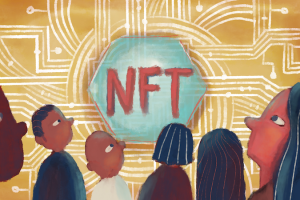Join Our Telegram channel to stay up to date on breaking news coverage
Most lovers of digital collectibles think of Ethereum, Solana, or Polygon when discussing them, and for good reason—proof-of-stake blockchains have dominated the NFT sector. However, Bitcoin-based digital collectibles have been around since 2014, and a number of projects have made it their ongoing goal to introduce NFTs to the first and largest cryptocurrency.
NFTs are digital assets that can be proven to be one of a kind and are connected to other digital (and occasionally physical) works of art, movies, and music that provide evidence of ownership or membership in a select club.
NFTs have been a part of the Bitcoin ecosystem for about ten years now, but some people still don’t understand the value.
One of these projects is called Ordinals, and some Bitcoin maximalists consider it to be an insult to the fundamentals of Bitcoin.
"you can't stop them" well ofc! bitcoin is designed to be censor resistant. doesn't stop us mildly commenting on the sheer waste and stupidity of an encoding. at least do something efficient. otherwise it's another proof of consumption of block-space thingy.
— Adam Back (@adam3us) January 29, 2023
Casey Rodarmor, the author of the Ordinals, takes the criticism in stride and claims that the uproar advances his cause.
He confessed,
I actually love the haters. I mean, they do more to drive people to find out about the project than anybody else. I don’t know what they think when they have these massive audiences, and they go, ‘This is an attack on Bitcoin’—it seems like you don’t want to do that if you don’t want people to use the thing.
Rodarmor, a previous contributor to the Bitcoin Core, created Ordinals to enable the exchange of single satoshis over the Bitcoin network. According to Rodarmor in an interview,
The Ordinals protocol is basically a way for numbering Satoshis, giving individual sats a serial number, and then tracking them between transactions.
Users can explore, send, and receive individual satoshis—which may contain specially engraved data like films and images—using the Ordinals protocol. Inscription describes the process of adding assets to individual satoshis. Inscriptions allow for the addition of material to a Bitcoin transaction and the tagging of a satoshi, as explained by Rodarmor. The writings are eventually saved as a Bitcoin transaction’s signature, according to Rodarmor.
According to Rodarmor, the procedure does not require a sidechain or supplementary token and operates purely on the Bitcoin network. “From the beginning, my design goal was to create something that would strike people as being native to Bitcoin,” he stated. That implies that it cannot be a sidechain or have a token.
The smallest unit of a Bitcoin is called a “Satoshi,” after Satoshi Nakamoto, the anonymous developer of the Bitcoin network. Satoshis, which trade for about $22,700 per coin right now, are most commonly used when someone buys a cup of coffee with BTC rather than a whole Bitcoin.
Marginalized peoples in developing countries will have to pay more to run their Bitcoin nodes and send transactions because privileged wealthy whites want to put JPEG drawings on the blockchain as status symbols. Just because you can doesn’t mean you should.
— Bitcoin is Saving (@BitcoinIsSaving) January 29, 2023
When compared to other uses of block space, Rodarmor asserts that this one has the least impact. “The data is downloaded by full nodes, but they disregard it”. He continues by disproving accusations that Ordinals and inscriptions would misuse the Bitcoin protocol or raise transaction costs by stating that they have no resource requirements.
One thing that people don’t understand is that in order for Bitcoin to be secure, blocks must be full—that is part of the Bitcoin security model. If blocks are not full, nobody has any reason to pay more than the minimum fee rate to have their transactions included. So, as a result, blocks must be full.
Inscriptions, according to Rodarmor, help to fill up blocks but do not alter the size of a Bitcoin block. Rodarmor claims he would not support such a thing.
Rodarmor claims that even in the event of a further update to the Bitcoin network, Ordinals would not likely experience any issues as the protocol only depends on a small portion of the Bitcoin network.
According to him,
[Ordinals] relies on the fact that transactions have inputs, transactions have outputs, [and] that inputs and outputs are valued in satoshis. So you can’t break Ordinals in an upgrade without breaking a whole lot of other things.
Related
Join Our Telegram channel to stay up to date on breaking news coverage


